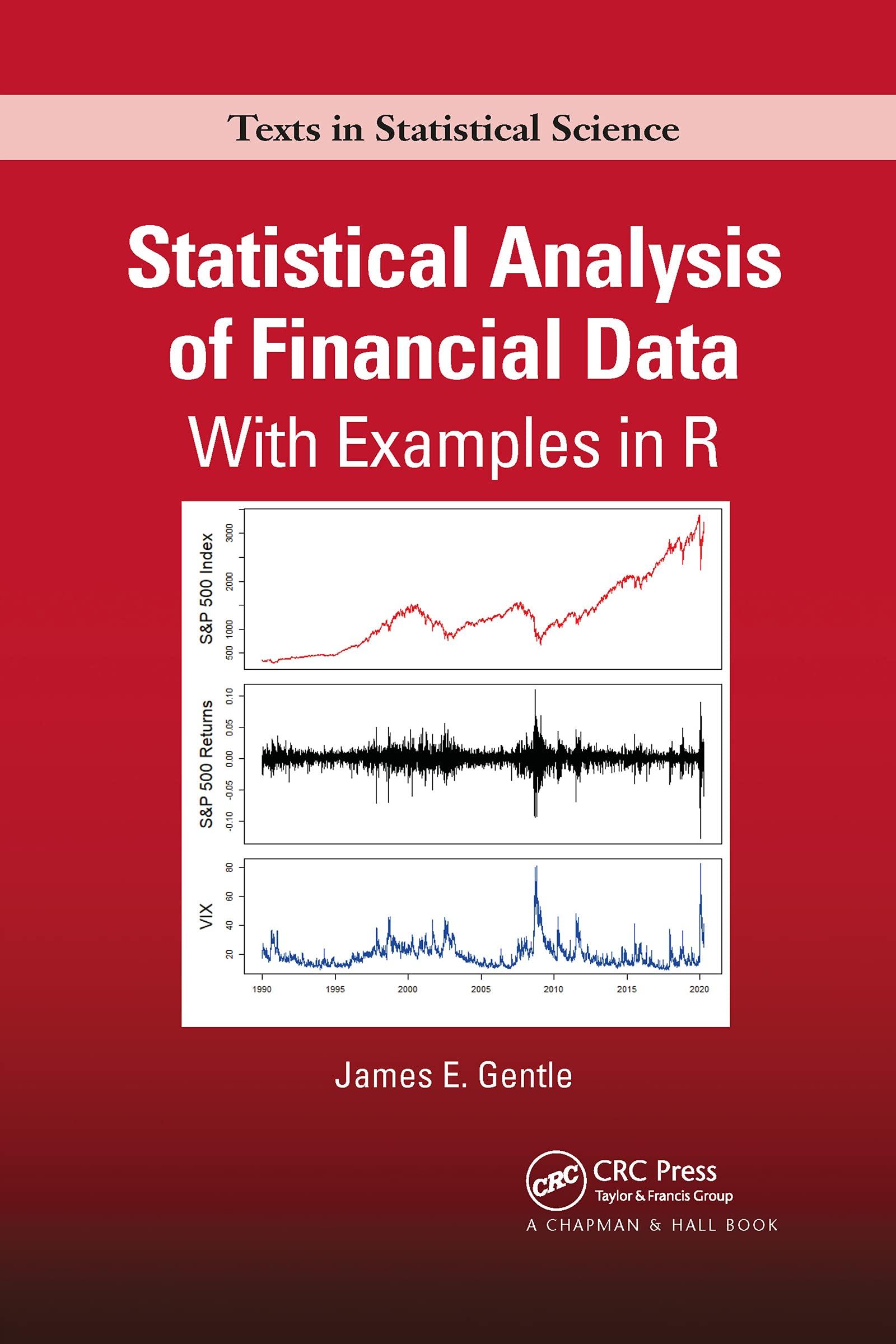Obtain the daily adjusted closing prices of Intel (INTC) for the period January 1, 2017, through September
Question:
Obtain the daily adjusted closing prices of Intel (INTC) for the period January 1, 2017, through September 30, 2017, and compute the returns. These are the data used in Exercise 4.5 and in the VaR examples, although because INTC pays dividends the adjusted closes may be slightly different.
Assume a holding of \$1,000 in INTC on October 10, 2017.
(a) Compute a nonparametric estimate of VaR for this holding with \(95 \%\) confidence for October 11, 2017 (one day out).
(b) Compute a nonparametric estimate of the expected shortfall for this holding with \(95 \%\) confidence for October 11, 2017 (one day out).
Which is larger, the VaR or the expected shortfall? Is this always the case?
(c) Compute a nonparametric estimate of VaR for this INTC holding with 95\% confidence for October 17, 2017 (one week out). This computation should be based on the historical simple weekly returns over a recent time period.
(d) Compute a nonparametric estimate of the expected shortfall for this holding with \(95 \%\) confidence for October 17, 2017 (one week out).
(e) Now, obtain the daily adjusted closing prices of Microsoft (MSFT) for the same period, January 1, 2017, through September 30, 2017, and compute the returns.
Assume a holding of \$1,000 in MSFT on October 10, 2017.
i. Compute a nonparametric estimate of the \(\mathrm{VaR}\) for this MSFT holding with \(95 \%\) confidence for October 11, 2017 (one day out).
ii. Compute a nonparametric estimate of the expected shortfall for this MSFT holding with \(95 \%\) confidence for October 11, 2017 (one day out).
(f) Now, consider a portfolio consisting of of \(\$ 500\) in INTC and \(\$ 500\) in MSFT on October 10, 2017.
For measures of risk, we need a model of the distribution of the returns, or at least of the returns no greater than the 0.05 quantile. Use historical frequency data as the model.
Assume that the portfolio is continuously rebalanced so that the proportions of INTC and MSFT are 50/50 at all times. (In practice, of course, portfolios would not be rebalanced this frequently, but it the assumption provides an approximate frequency distribution for the returns.
i. Compute a nonparametric estimate of VaR for this portfolio with \(95 \%\) confidence for October 11, 2017 (one day out). Compare this with the VaRs for INTC and MSFT individually as computed above. Does this indicate whether or not VaR is coherent?
ii. Compute a nonparametric estimate of the expected shortfall for this portfolio with \(95 \%\) confidence for October 11, 2017 (one day out).
Compare this with the expected shortfalls for INTC and MSFT individually as computed above. Does this indicate whether or not expected shortfall is coherent?
Data From Exercise 4.5:
Obtain the daily adjusted closing prices of Intel (INTC) for the period January 1, 2017, through September 30, 2017, and compute the returns. These are the data used in the VaR examples, although because INTC pays dividends the adjusted closes may be slightly different.
Fit a location-scale ("standardized") t distribution to these data using maximum likelihood. The \(\mathrm{R}\) function fitdistr in the package MASS performs this fit. Identify the parameter estimates you obtain.
What is the estimated standard deviation of the fitted \(t\) distribution?
Step by Step Answer:






